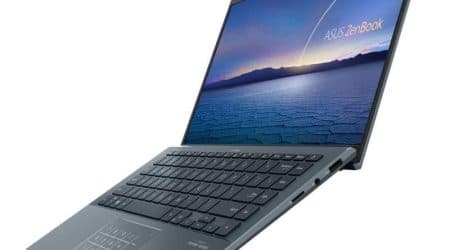The realm of computing power is vast, and within it, various options cater to different needs and preferences. As technology advances, understanding the distinctions between several tiers within the same family becomes essential for making an informed decision. This exploration will guide you through the attributes and capabilities of two popular categories, aiding in the selection of the most suitable fit for your requirements.
With an ever-growing list of tasks demanding computing resources, from casual browsing to intense gaming and content creation, knowing what each tier offers can significantly impact your experience. This comparison emphasizes the key differences in functionality, allowing users to weigh the benefits against their specific demands. Whether you’re a student, a gamer, or someone who multitasks heavily, understanding these options can make a great deal of difference.
As we delve deeper, we will examine various aspects–such as performance, efficiency, and cost–providing insight into how each choice aligns with different scenarios. By understanding the nuances between these categories, you will be better equipped to select the right chip that aligns with your lifestyle and usage patterns.
Understanding Intel’s Core i3 and i5
When it comes to choosing a compute solution, it’s key to recognize the distinctions between two popular tiers offered by a leading manufacturer. These offerings cater to a wide range of tasks, from everyday computing needs to more demanding applications, allowing users to select an option that aligns with their requirements and budget.
The first tier is typically aimed at casual users who engage in basic tasks, such as web browsing, word processing, and streaming media. Meanwhile, the second tier targets those who require enhanced performance for more intensive activities, including gaming, content creation, and multitasking scenarios. Understanding the specific features and performance capabilities of these solutions enables consumers to make an informed decision and optimize their experience.
| Feature | i3 Tier | i5 Tier |
|---|---|---|
| Target Users | Casual Users | Enthusiasts |
| Performance Level | Basic | Moderate to High |
| Cores/Threads | 2-4 Cores, 4 Threads | 4-6 Cores, 8 Threads |
| Gaming Capability | Entry-Level | Mid-Range |
| Multitasking | Limited | Better Handling |
Ultimately, evaluating personal usage scenarios and future needs can significantly impact the selection between these two tiers. By taking into consideration performance specifications and application requirements, users can ensure a successful computing experience tailored to their unique preferences and tasks.
Key Differences Between i3 and i5
When evaluating different options in the realm of computing hardware, it is essential to grasp the primary distinctions that set apart various models within a family. Understanding these differences can significantly influence your choice based on your specific tasks and usage requirements. This segment will shed light on the essential features that distinguish these two series, aiding in a more informed decision-making process.
Performance Levels
- Clock Speed: Generally, the higher the clock speed, the better the performance. The i5 line typically offers superior base and boost frequencies compared to its i3 counterpart.
- Core Count: i5 models often feature additional cores, allowing for enhanced multitasking and superior performance in demanding applications.
- Hyper-Threading: While many i3 versions include this technology, it is more commonly associated with the i5 series, improving efficiency in handling parallel tasks.
Graphics and Compatibility
- Integrated Graphics: Each version has integrated graphical capabilities, but the i5 generally provides a more robust graphical performance, suitable for light gaming and graphics-intensive tasks.
- Support for Turbo Boost: The ability to automatically increase clock speeds in response to workload demands is typically available in the i5 range, enhancing performance efficiency.
- RAM Support: Higher models generally support faster speeds and greater memory amounts, allowing for improved system responsiveness and multitasking capabilities.
Performance Benchmarks: i3 vs i5
When comparing various computing units, understanding performance metrics is essential. This section delves into the differences in benchmarks between two popular tiers, highlighting their capabilities in real-world scenarios.
Here are some aspects to consider when analyzing performance:
- Single-Core Performance: Many applications rely heavily on single-thread execution. The higher frequency and improved architecture often give an advantage to one tier over the other.
- Multi-Core Performance: Tasks that leverage multiple cores can see significant boosts in efficiency from units designed with more cores and threads.
- Gaming Performance: Gaming benchmarks often reveal how well each tier handles modern titles, focusing on frame rates and resolution output.
- Productivity Tasks: Office applications, video editing, and content creation require varying levels of performance, showcasing the strengths of each unit in practical scenarios.
To better illustrate the differences, here are some benchmark comparisons:
- Geekbench Scores: High-performance scores can indicate processing strength in both single and multi-core tests.
- PassMark Performance: This application evaluates overall performance, providing a consolidated view of how well each tier performs under various loads.
- Frame Rate Tests: In demanding games, frame rates can vary widely, showcasing how well each unit adapts to graphical demands.
Ultimately, selecting the best fit involves understanding specific needs and how each unit performs across these various benchmarks.
Ideal Use Cases for Each Processor
When considering various computing needs, selecting the right hardware can significantly enhance the user experience. Different models cater to distinct requirements, and understanding these applications is crucial for making an informed choice.
Entry-Level Tasks and Everyday Computing
The first variant excels in basic functions such as web browsing, word processing, and multimedia consumption. This choice is perfect for casual users who primarily engage in online activities, social media, and streaming content. Its efficient performance ensures that tasks are completed smoothly without excessive power consumption.
Multitasking and Demanding Applications
The second option is tailored for users who require more robust capabilities. This variation shines in environments where multitasking and resource-heavy programs, such as video editing, gaming, or software development, are common. Its higher processing power allows for the seamless execution of intricate tasks while enhancing overall efficiency.
Price-to-Performance Analysis
In the ever-evolving world of computing, understanding the relationship between cost and capability is crucial. Potential buyers need to evaluate how much they are willing to invest and what kind of performance they can expect in return. This segment provides insights into the value proposition associated with different choices in the lineup.
When assessing the cost-effectiveness of various options, several key aspects must be taken into consideration:
- Initial Cost: The purchase price is often the first factor that influences decisions. Lower-priced models may appear attractive but can sometimes compromise on performance.
- Performance Metrics: Look at benchmarks and real-world performance indicators to gauge efficiency in everyday tasks and demanding applications.
- Longevity: Consider how long the hardware will meet your needs. Investing slightly more in a higher-performing variant can extend the useful life of your setup.
- Energy Efficiency: Evaluate how much power each option consumes, as this can significantly impact operating costs over time.
To make a well-informed choice, it’s essential to analyze user requirements and budget constraints, ensuring that the selected variant aligns with specific needs. Below is a simplified comparison of typical configurations and their respective values:
- Budget Option:
- Price Range: $100 – $150
- Best For: Basic tasks like web browsing and document editing.
- Mid-Tier Option:
- Price Range: $150 – $300
- Best For: Moderate gaming, multitasking, and productivity applications.
- High-End Option:
- Price Range: $300 and above
- Best For: Gaming, content creation, and demanding computational tasks.
Ultimately, the objective is to find a harmonious blend of cost and capability, ensuring optimal satisfaction and performance based on individual usage scenarios.
Which CPU Suits Your Needs?
Choosing the appropriate chip for your computing requirements involves understanding your usage scenarios and performance expectations. Different models cater to various demands, whether for daily tasks, gaming, or professional applications. Evaluating your activities can help refine your selection, ensuring an optimal experience.
Basic Tasks and Everyday Use
If your activities include browsing the web, watching videos, and using office applications, the more affordable option may be sufficient. These chips provide adequate performance for regular tasks without unnecessary expenditure on advanced capabilities.
Gaming and Intensive Applications
For those who engage in gaming, video editing, or graphic design, investing in a more powerful variant could significantly enhance performance. These higher-tier models offer improved speed and multitasking abilities, allowing for a smoother and more responsive experience during demanding activities.
Q&A: Cpu showdown intel core i3 vs i5
How do Intel Core i5 and Core i7 processors compare in terms of performance for laptops and desktops?
Intel Core i5 and Core i7 processors are popular choices for both laptops and desktops, offering different levels of performance based on user needs. The Core i5 processor typically provides a good balance of performance and price, making it suitable for everyday computing, office work, and light gaming. It usually features quad-core or six-core configurations with moderate clock speeds and cache sizes. Core i7 processors, on the other hand, offer better performance with higher clock speeds, larger cache sizes, and additional cores, making them ideal for multitasking, content creation, and gaming at 1080p. Core i7 CPUs also support hyperthreading, which improves performance in multi-threaded applications, giving them an edge over Core i5 processors.
What is the difference between Intel Core i3 and i5 processors, and which is better suited for basic computing tasks?
Intel Core i3 processors are entry-level CPUs that offer dual-core or quad-core configurations with lower base clock speeds and smaller cache sizes compared to Core i5 processors. Core i3 models are suitable for basic computing tasks such as web browsing, word processing, and streaming videos. In contrast, the Core i5 processor provides better performance with higher clock speeds, more cores, and often supports multithreading technology, making it more capable for demanding tasks like gaming, photo editing, and light video rendering. For users looking for a CPU that can handle more intensive workloads, the Core i5 is a better choice than the Core i3.
How does the presence of a discrete graphics card impact the performance of Intel Core i5 and i7 processors in gaming and graphics tasks?
Both Intel Core i5 and Core i7 processors can benefit significantly from a discrete graphics card, especially in gaming and graphics-intensive tasks. While these CPUs come with integrated Intel HD Graphics, the performance is limited compared to dedicated GPUs. For gaming PCs or systems used for video editing and 3D rendering, pairing a Core i5 or Core i7 processor with a discrete graphics processing unit (GPU) like those from AMD or NVIDIA provides a substantial boost in graphics performance. This combination allows users to enjoy higher frame rates, better visuals, and smoother gameplay at 1080p and beyond.
What are the advantages of choosing a Core i7 processor over a Core i5 when building a high-performance desktop?
Choosing a Core i7 processor over a Core i5 when building a high-performance desktop offers several advantages, including higher clock speeds, more physical cores, and larger cache sizes. Core i7 CPUs often include advanced features like hyperthreading, which allows each core to handle two threads simultaneously, improving performance in multi-threaded applications such as video editing, 3D modeling, and gaming. Additionally, the higher core count and clock speed of Core i7 processors provide better performance in tasks that require significant computational power. This makes the Core i7 a preferred choice for power users who need more than what a Core i5 can offer.
How do Intel Core i5 CPUs compare to Core i3 processors in terms of performance and suitability for different tasks?
Intel Core i5 CPUs generally offer higher performance compared to Core i3 processors due to a greater number of cores, higher clock speeds (GHz), and better overall architecture. Core i5 processors often come in quad-core or even six-core configurations, while Core i3 CPUs are usually dual-core or basic quad-core models. This increased core count and clock speed allow i5 CPUs to handle more demanding applications, such as gaming, multitasking, and content creation, better than Core i3 processors. For users looking for a desktop processor that balances cost and performance, the Core i5 is typically a better choice than the Core i3.
What makes Core i7 CPUs superior to Core i5 and Core i3 processors for desktop or laptop use?
Core i7 CPUs are superior to Core i5 and Core i3 processors primarily due to their higher number of cores, often featuring six or eight cores, and support for hyperthreading technology. This enables the CPU core to handle more threads per core, enhancing performance in multi-threaded applications like video editing, 3D rendering, and heavy multitasking. Core i7 processors also come with higher base and boost clock speeds (GHz) compared to i5 and i3 models, allowing them to deliver faster and smoother performance. These features make Core i7 an ideal choice for power users who need a desktop or laptop processor capable of running demanding software efficiently.
How does the number of cores and clock speed in a desktop processor impact performance for everyday computing and gaming?
The number of cores and the clock speed (measured in GHz) significantly impact the performance of a desktop processor, especially in tasks like gaming, content creation, and multitasking. Processors with more cores, such as quad-core i5 CPUs or even higher-core count Core i7 and Core i9 models, can run multiple applications simultaneously without slowing down. A higher clock speed per core means the CPU can execute tasks faster, leading to smoother gameplay and quicker response times. When choosing between processors like i3, i5, and i7, considering the balance between core count and GHz is crucial for achieving the desired performance level.
What role does the motherboard play in supporting the performance of Intel processors like Core i3, i5, and i7?
The motherboard plays a critical role in supporting the performance of Intel processors, including Core i3, i5, and i7 CPUs, by providing the necessary chipset, socket, and power delivery for the CPU core. A compatible motherboard ensures that the processor runs at its optimal clock speed and supports advanced features like SSD storage, multiple RAM slots, and PCIe slots for GPUs. The choice of motherboard can influence the performance of the CPU by affecting cooling efficiency, power stability, and the ability to overclock in higher-end models. For those looking to maximize the performance of their Intel CPU, selecting a motherboard that matches the processor’s capabilities is essential.



